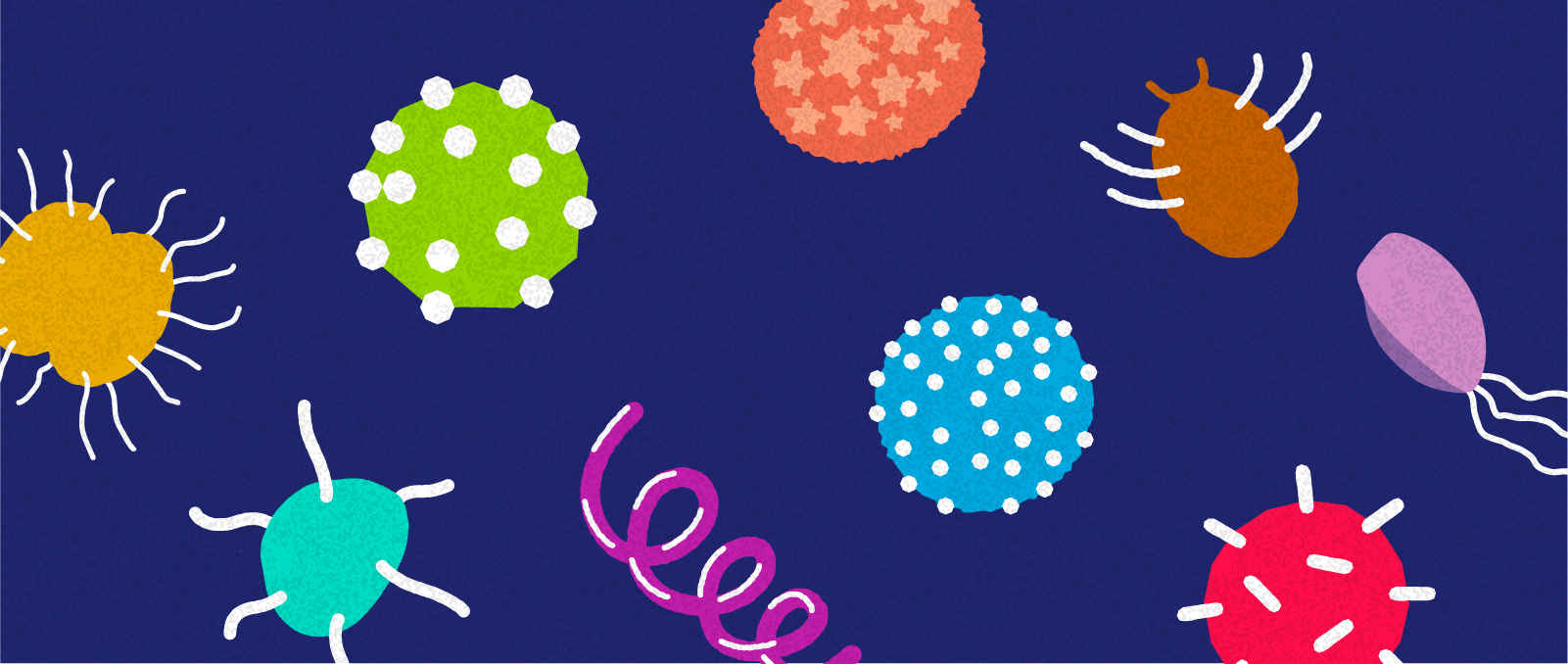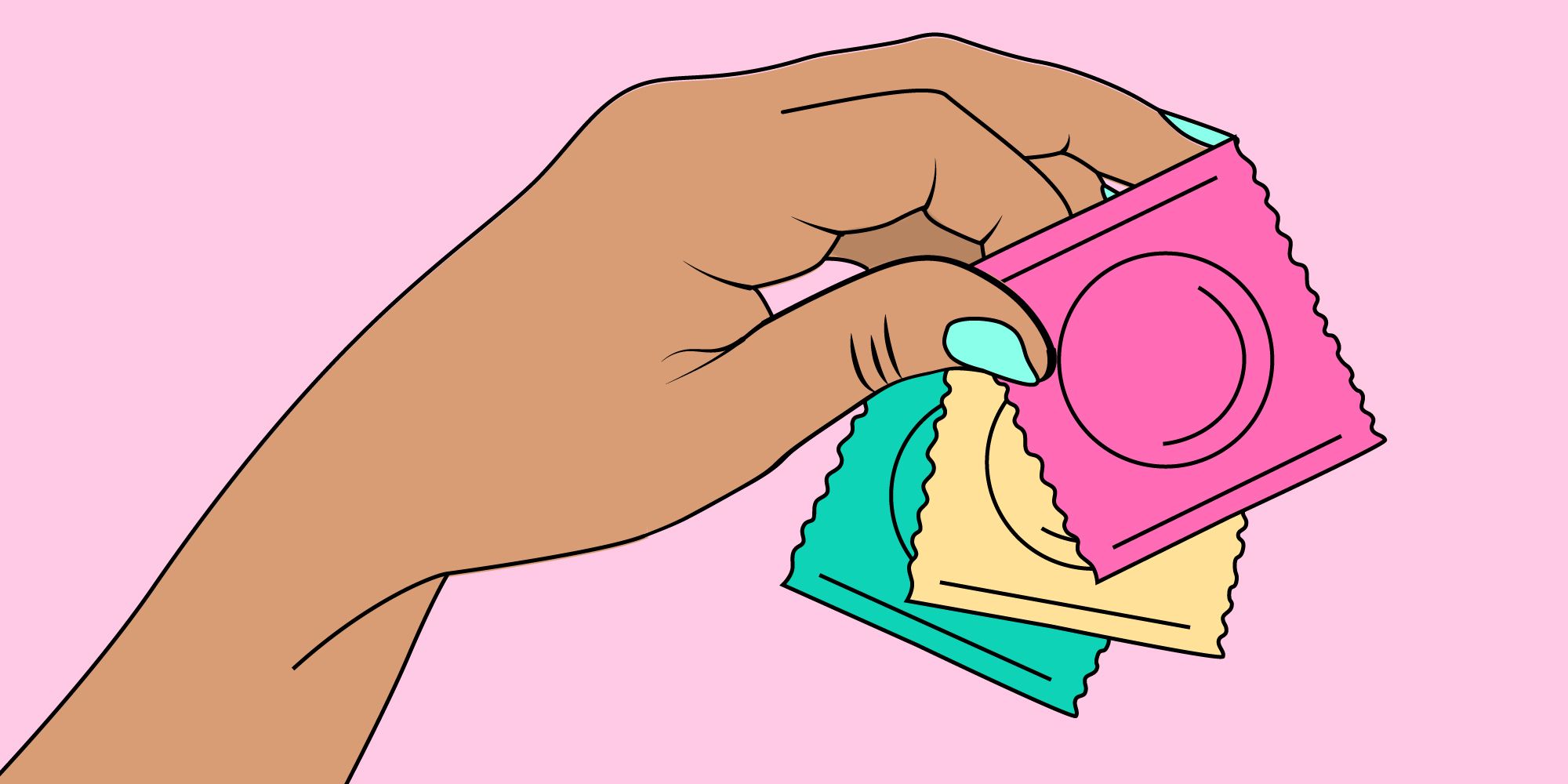There is still a general stigma attached to acquiring sexually transmitted infections and diseases (STI/STDs), however, they are much more common than you think! More than 1 million STIs are acquired every day1, and according to the CDC, 1 in 5 Americans have an STI at any one time!1
Nevertheless, just because they are common doesn’t mean that you must get them – they are easily avoidable and easily treatable. Let’s delve into the ins and outs of the most common STIs.

Chlamydia
Chlamydia is the most common bacterial STI in the UK2. It is caused by an infection with Chlamydia trachomatis. Most people with a chlamydia infection do not know that they have an infection as it often doesn’t show any symptoms. However, when symptoms do arise, they can come in the form of yellowish/foul smelling discharge or cervical/abdominal/testicular pain3.
Chlamydia is transmitted via sexual contact with an infected partner.
Sexual contact includes contact with secretions from the penis, vagina, or anus.
In fact, full ejaculation does not need to occur to transmit or acquire chlamydia. It can also be transmitted via sharing uncleaned sex toys, or during childbirth from an infected mother to newborn.
Chlamydia is easily treated with a course of antibiotics – such as Doxycycline taken as a tablet, twice a day for 7 days (although local protocols will vary).
Gonorrhoea
Gonorrhoea is another commonly STI caused by a bacteria. It is caused by an infection with Neisseria gonorrhoeae.
1 in 10 infected men and around 5 in 10 infected women do not experience any symptoms of gonorrhoea.
However, in those that do, typical symptoms include thick green/yellow discharge from the penis/vagina, pain when urinating and bleeding between periods..
Similarly to chlamydia, gonorrhoea is spread via the secretions from the penis and vagina. It is easily spread via unprotected vaginal, oral or anal sex, as well as by sharing uncleaned sex toys.
Gonorrhoea can also be passed on via childbirth to a newborn. It is especially important to be treated for gonorrhoea infection ASAP in pregnancy, as it can cause permanent blindness in newborns if left untreated4.
Gonorrhoea can be treated simply, with a single dose antibiotics such as ceftriaxone, administered via intramuscular injection (again local protocols will vary).
Trichomoniasis
Trichomoniasis is an STI caused by a parasite called Trichomonas vaginalis. Although the infection is more common in women, men can get trichomoniasis too5.
A trichomoniasis infection sometimes can be difficult to diagnose as its symptoms are quite similar to other STIs. However, trichomoniasis can cause more discharge than usual with an unpleasant ‘fishy’ smell. It can also cause soreness/swelling/itching around the vagina/head of the penis, or pain when urinating in men (which can also become more frequent)6.
Trichomoniasis is transmitted in a similar fashion to chlamydia and gonorrhoea, but it is extremely rare to be passed on to newborns via childbirth. It is still important to treat in pregnancy, because if a pregnant mother is infected with trichomoniasis, they are more likely to have a low-birth-weight baby or give birth prematurely6.
Trichomoniasis is again treated with oral antibiotics, such as metronidazole twice a day for 5-7 days, or as a one-off dose like for gonorrhoea.
Genital Warts
Genital warts are the most common viral STI, caused by certain subtypes of the human papilloma virus (HPV). HPV is a very common group of viruses, with over 100 types identified7.
The most common subtypes responsible for warts are HPV 6 and 11. Genital warts tend to present as 1 or more painless flesh-coloured growths/lumps around your vagina, penis or anus. They also have the potential to itch or bleed.
Genital warts are different to the STIs above, in that you do not have to have penetrative sex or come into contact with bodily fluids to get it – skin-to-skin contact is the route of transmission.
Other STIs that can be transmitted via skin-to-skin contact include herpes, molluscum contagiosum, pubic lice, scabies and syphilis.
Some genital warts can disappear spontaneously within 6 months, but if they do not, they can be treated in a few ways. For example:
- Topical creams such as Warticon or Aldara
- Freezing off with cryotherapy
- Minor surgical excision

How to Avoid STIs
- Barrier Methods
- The most common STIs are transmitted via sexual contact and bodily secretions. Therefore barrier methods are really effective at reducing STI transmission
- The most common barrier method is condom use – use one every time you have vaginal, anal or oral sex. Ensure that a new condom is used each time when changing the region of penetration
- Other barrier methods include femidoms, dental dams
- Note – barrier methods will not completely protect you from STIs that can be transmitted via skin contact, but will reduce the risk
- Toy Hygiene
- If you use sex toys, it is best not to share them
- If you do share them, ensure you wash them or cover them with a new condom before anyone else uses them
- Vaccination
- Some STI/STDs are incurable, such as hepatitis B, HPV infection, herpes or HIV. While the last two have no current vaccine available, there are vaccination programmes in place for eligible people for Hep B and HPV8,9
There are various ways proven to reduce transmission of STIs.
However, the most effective way is to practice safe sex, which also means regularly getting tested. It is advised that you get tested at least once every 3 months. However, if you have had multiple new partners/a high risk encounter, it is best to visit your nearest sexual health clinic just so that you can be advised further.
FAQs
Does it mean I’m not clean if I have an STI?
Not at all! STIs are more common than you think.
However, good hygiene practice such as not sharing sex toys, cleaning them or covering them with a condom reduces your risk.
Is it true only people who have loads of sex get STIs?
As long as you have had unprotected genital contact, you can be at risk – it doesn’t matter if you have had sex 1 or 100 times.
If I have an STI, does this mean my partner cheated on me?
Not only can most STIs give no symptoms, but some viruses such as herpes or HPV can lay dormant and are not necessarily transmitted on every sexual encounter.
They can reactivate later and be passed on, which means a partner could pass on an old STI during a monogamous relationship without having had a new sexual partner.
It’s always worth having an open and honest conversation, but avoid blame or judgement until you have all the facts.
Are all STI/STDs curable/treatable?
Unfortunately, STDs such as hepatitis B, HPV, herpes and HIV are incurable. However, Hep B and HPV vaccination programmes exist, and all STDs are readily treatable.
REFERENCES
4. Gonorrhoea [Internet]. nhs.uk. 2021 Available from: https://www.nhs.uk/conditions/gonorrhoea/
